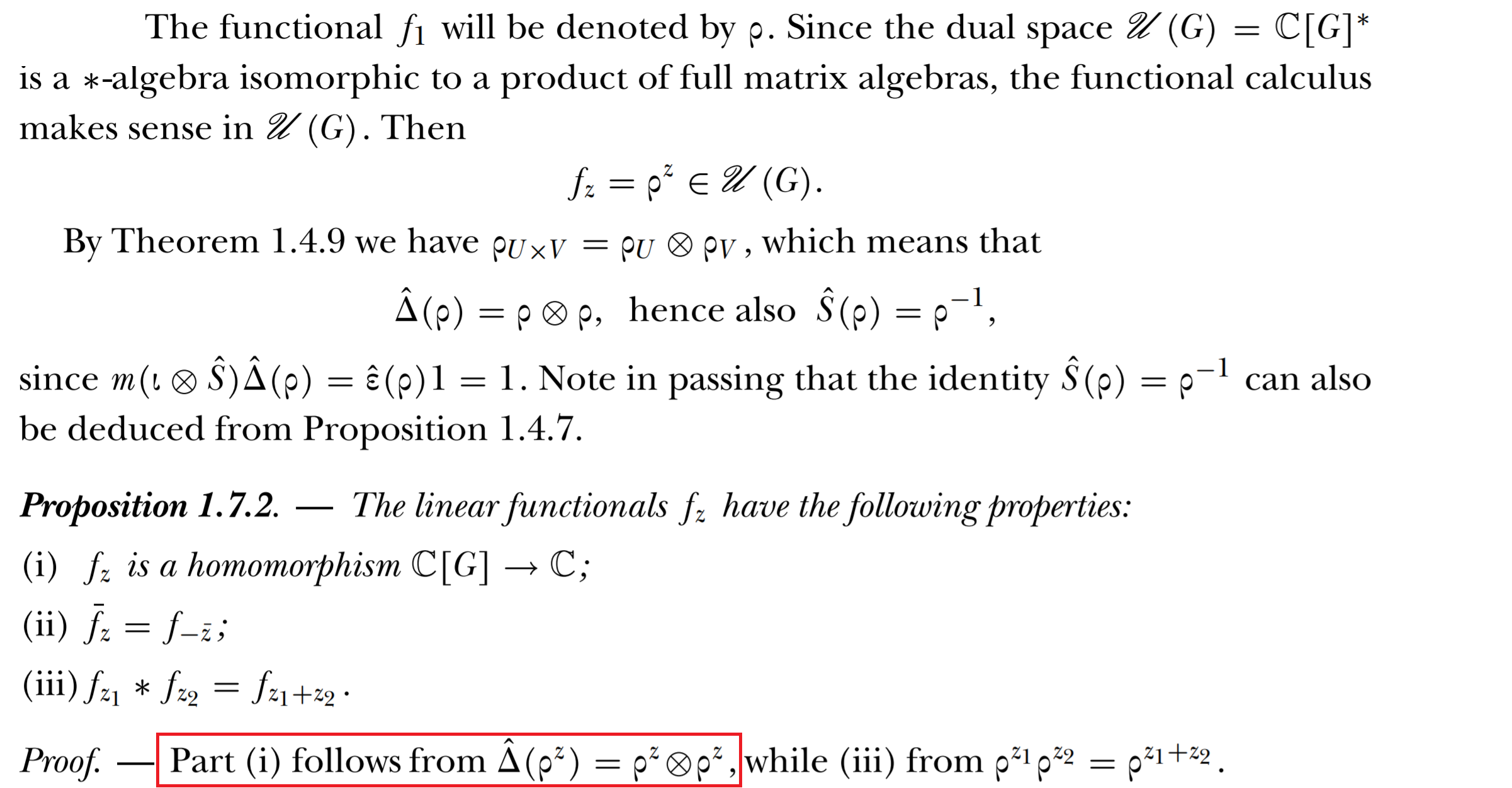I'm reading the book "Compact quantum groups and their representation categories" by Neshveyev-Tuset.
Let $G$ be a $C^*$-algebraic compact quantum group with function algebra $(C(G), \Delta)$. Given a unitary representation $U \in B(H_U)\otimes C(G)$ of $G$, there is a unique invertible bounded intertwiner $\rho_U \in \operatorname{Mor}(U,U^{cc})$ such that $$\operatorname{Tr}(-\rho_U) = \operatorname{Tr}(-\rho_U^{-1})$$ on $\operatorname{End}(U)\subseteq B(H_U)$ [Proposition 1.4.4, p16].
On p29, the following definition is given:
Definition: The Woronowicz characters is the family $\{f_z\}_{z \in \mathbb{C}}$ of linear functionals on $\mathbb{C}[G]$ (= the unique dense Hopf $^*$-subalgebra of $C(G)$, i.e. the space of matrix coefficients) defined by $$(\iota \otimes f_z)(U) = \rho_U^z$$ for all finite-dimensional representations $U$ of $G$.
Let us write $\mathscr{U}(G):= \mathbb{C}[G]^*$ (the algebraic dual space) which becomes a unital $*$-algebra in the obvious way (the $*$-algebra structure is induced by the Hopf-structure on $\mathbb{C}[G]$). Fixing a complete set of irreducible, pairwise non-equivalent unitary representations $\{U_\alpha \in B(H_\alpha)\otimes C(G)\}_{\alpha \in I}$, it is straightforward to see that the mapping $$\Phi: \mathscr{U}(G)\to \prod_{\alpha \in I} B(H_\alpha): \omega \mapsto ((\iota \otimes \omega)(U_\alpha))_{\alpha \in I}$$ is an isomorphism of $*$-algebras. Writing $\mathscr{U}(G \times G) = (\mathbb{C}[G]\otimes \mathbb{C}[G])^*$, we have a natural map $$\widehat{\Delta}: \mathscr{U}(G)\to \mathscr{U}(G \times G)$$ defined by $\widehat{\Delta}(\omega)(a\otimes b) = \omega(ab)$.
On p30, the authors write the following:
Why is the boxed equation true? I understand that $\widehat{\Delta}(\rho) = \rho \otimes \rho$.
I'm a bit confused when they say that we can do functional calculus in $\mathscr{U}(G)$. I guess this means we can look at the $*$-isomorphism $\Phi$ and do functional calculus in each $B(H_\alpha)$ and then use this to make sense of the functional calculus in $\mathscr{U}(G)?$

